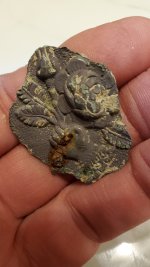lesjcbs
Hero Member
- Jul 14, 2011
- 880
- 338
- Detector(s) used
- Pocket dowsing L- Rods shown above. Whites Beach Comber, Bounty Hunter Sharp Shooter II, Whites TM 808, Canon 350D EOS Digital Rebel XT DSLR Camera.
- Primary Interest:
- Metal Detecting
When using L-Rods, how do you determine a targets depth?




